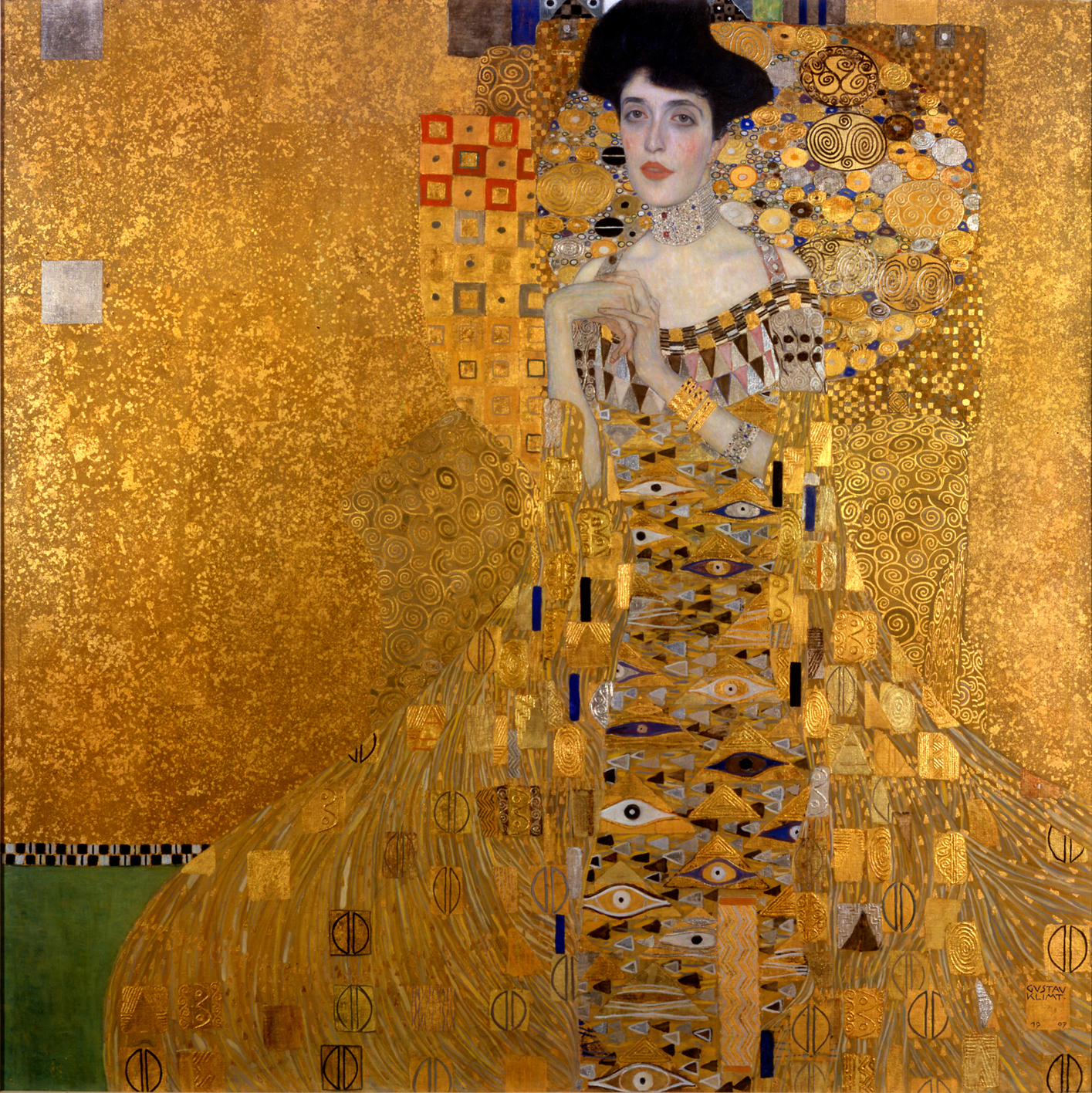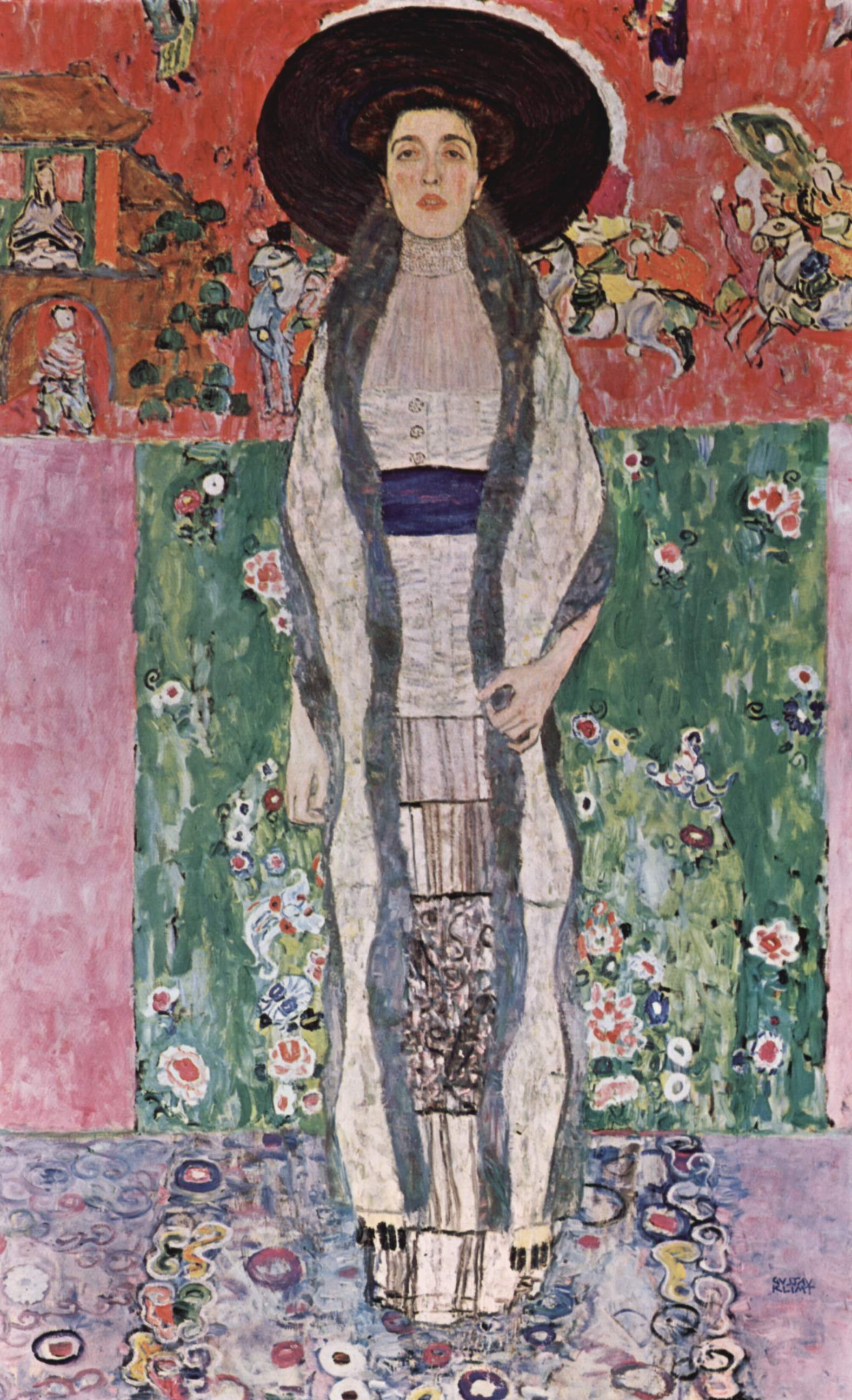Portrait Of Adele Bloch-Bauer I Pocket Square
In our latest Product Focus, we take a look at one of our most vibrant pocket squares: Portrait Of Adele Bloch-Bauer I Pocket Square by Gustav Klimt.
Within the post, we'll explore the history of the artist and the subject of the painting, along with the finer details of the piece and some of the themes employed by Klimt.
VIEW THE PRODUCT: Portrait Of Adele Bloch-Bauer I Pocket Square
ABOUT THE PAINTING
Portrait of Adele Bloch-Bauer I (also called The Lady in Gold or The Woman in Gold) is a painting by renowned artist Gustav Klimt and was completed between 1903 and 1907. The portrait is the final and most fully representative work of Klimt's golden phase. It was the first of two depictions of Bloch-Bauer by Klimt, the second completed in 1912. These were two of several works by the artist that the family owned.

In 1903 Ferdinand Bloch commissioned Klimt to paint a portrait of his wife with the intention of gifting the piece to her parents as an anniversary present. Klimt created over 100 preparatory sketches for the portrait and worked extensively on the piece, more than any other he had previously painted. His obsession with the mosaic pattern after visiting the Basilica of San Vitale was central to this painting and the portrait was the final and most fully representative work of Klimt's golden phase.

(Early sketches of Adele Bloch-Bauer by Gustav Klimt)
Did you know? Klimt studied early-Christian Byzantine gold ground mosaics of Justinian I and his wife, Empress Theodora. This was the inspiration for the portrait.

(Mosaic of Empress Theodora which inspired Klimt's portrait of Adele)
The painting measures 138x138cm and is composed of oil paint with silver and gold leaf on canvas. The portrait shows Adele Bloch-Bauer, a Viennese socialite, sitting on a golden throne or chair in front of gold background. She wears a golden dress and a jewelled choker which featured in another of Klimt's portraits, Judith and the Head of Holofernes. The preparatory work for this portrait started in mid 1903 and the final piece was completed by 1907.
DETAILS WITHIN THE PAINTING
Gustav Klimt was well known for his 'Golden Phase', a period where Klimt's style was defined and resulted in some of the most well-known and valuable paintings in modern art.
Portrait of Adele Bloch-Bauer I was produced at the height of this period. The use of gold and silver leaf gives an ethereal feel to the painting, while her hair, face, décolletage and hands are painted in oil. Many critics say Klimt makes Adele Bloch-Bauer look more like a religious icon than it being a secular portrait with the use of gold and silver.
It has also been suggested that there is a theme of eroticism within the painting. The triangular and egg shapes, as well as the shapes representative of eyes and almonds evident on her dress are cited as the reasoning behind this theory.
ABOUT THE ARTIST
Gustav Klimt was an Austrian painter, born in 1862. The second oldest out of seven children, Klimt was heavily influenced by his parents to show off his artistic capability. His mother had an ambition to be a musical performer while his father was a gold engraver. The three sons of the family all displayed artistic talent from early on. Klimt lived in poverty while attending university where he studied architectural painting, where he heavily admired Hans Makart, Vienna's foremost painter of the time.

In 1877, Klimt was developing a reputation for his work and was being commissioned for grander projects such as painting interior murals and ceilings in the Kunsthistorisches Museum. However, in 1892, Klimt's life changed with the death of his father and brother. With this tragic event, Klimt found his style of painting changed, moving from an academic style to a more personal style. During this time Klimt also met Emilie Flöge who was to be his companion till the end of his life. The Austrian fashion designer was the model in many of his works and also features in our collection of Klimt's pocket squares.
View The Product: Emilie Flöge Pocket Square
Klimt continued to develop and have further success. He became one of the founding members of the Vienna Succession (1897), a group with the goals of providing exhibitions for unconventional young artists, bringing the works of the best foreign artists to Vienna, and to publish its own magazine to showcase the work of members.
The group encouraged paintings of all styles. However when Klimt was commissioned to create three paintings for the Great Hall at the University of Vienna, he courted controversy with their style. His paintings were criticised for their radical theme, due to the nudity displayed which was not the norm of the time. The paintings were never displayed and as a result of this, it was Klimt's last public commission.
The Golden Phase was the benchmark for Gustav Klimt, the period where his paintings revolved around the use of gold leaf. Although used early in his career, defining work such as Portrait of Adele Bloch-Bauer I and The Kiss heavily cemented his place in art history.
He led a quiet but successful life while keeping his private life hidden away. He spoke very little or shared any details about his relationships. In a rare public piece about himself, Klimt stated, "There is nothing special about me. I am a painter who paints day after day from morning to night ... Whoever wants to know something about me ... ought to look carefully at my pictures."
Klimt died in 1918 from a stroke and pneumonia caught during the worldwide influenza epidemic that year.
Adele Bloch-Bauer
Adele Bloch-Bauer (August 9th 1881 - January 24th 1925) was a Viennese socialite and patron of the arts from Austria-Hungary. She is most well known for being the subject of two of Klimt's most famous works. Portrait of Adele Bloch-Bauer I (1907) and Portrait of Adele Bloch-Bauer II (1912), she is the only verified person to be painted twice by Klimt in full length.

(Portrait of Adele Bloch-Bauer II, 1912, Gustav Klimt)
Did you know?It is said, Bloch-Bauer was Klimt's mistress, and many believe her to be the subject in both 'The Kiss' and 'Judith and the Head of Holofernes.
What Makes Our Pocket Squares So Special?







